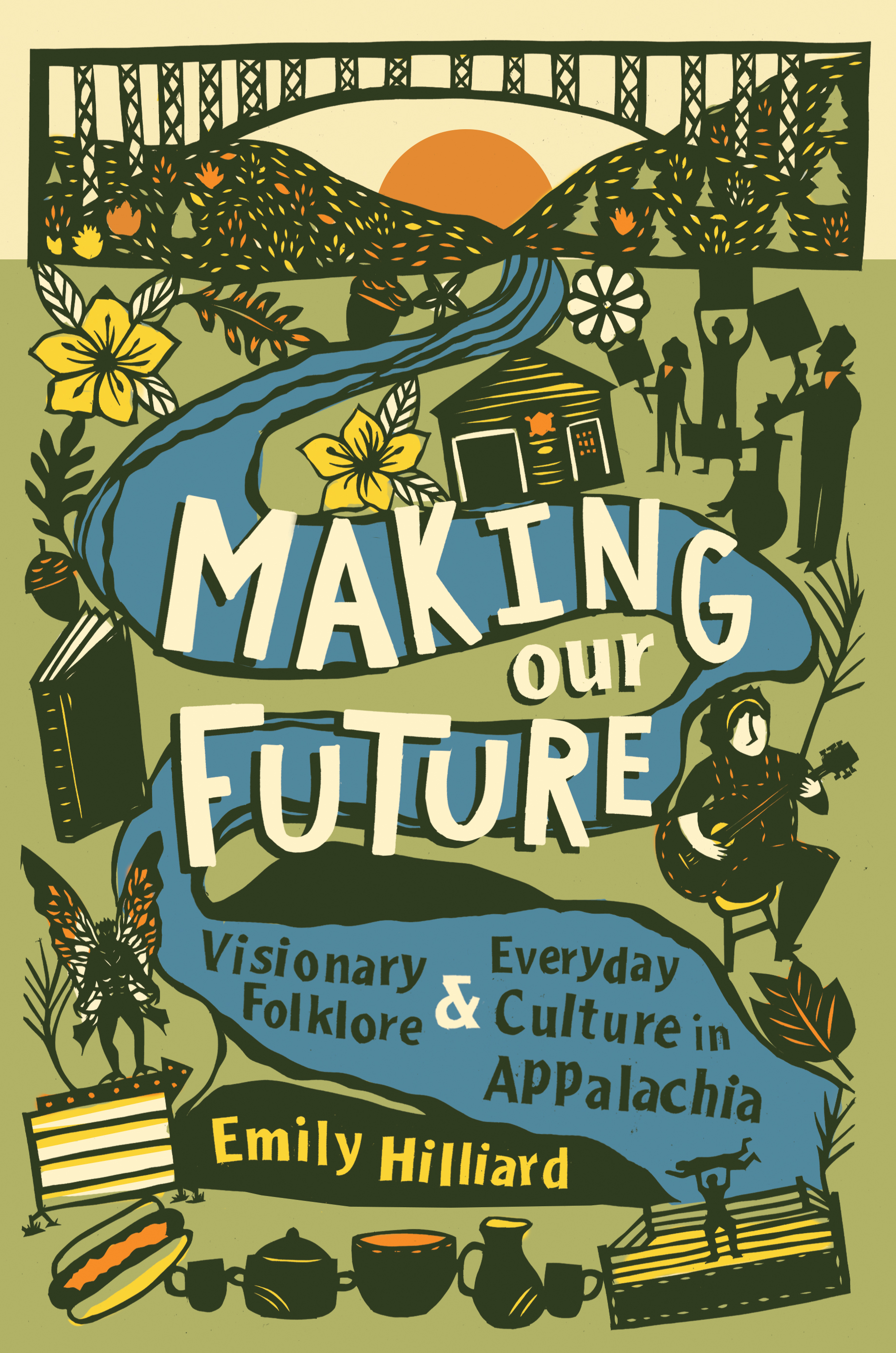"MAKING OUR FUTURE: VISIONARY FOLKLORE & EVERYDAY CULTURE IN APPALACHIA" by Emily Hilliard (University of North Carolina Press, 312 pages, $25).
In her book "Making Our Future: Visionary Folklore & Everyday Culture in Appalachia," Emily Hilliard presents what she calls "visionary folklore." Her work is grounded in the present and looks to the future rather than simply focusing on preservation of the past. She sidesteps nostalgia in favor of a cooperative approach that catalogs long-running traditions while seeking to identify and participate in new cultural practices as they emerge.
For Hilliard, folklore is anything everyday folks do or create, ranging from heirloom recipes and song and dance traditions to more contemporary examples like a meme shared among friends or a community of independent pro wrestlers. While the book primarily explores folklife in West Virginia (where Hilliard worked as state folklorist), she uses the particularities of the Mountain State to make connections throughout Appalachia and beyond.
In what may be the most surprising chapter of the book, "Friends of Coleslaw: On the West Virginia Hot Dog," Hilliard narrates a road trip through the state to some of its long-established hot-dog stands and explores the cultural significance of the region's wiener cuisine. We learn about the "slaw line," a cabbage-slinging border running along the northern part of the state where one can find freshly prepared coleslaw on a typical dog order, in addition to the usual trio of chili, mustard and onions. While exploring the varieties of toppings and the history of the hot-dog stand as a business venture, Hilliard notes other social and economic throughlines in her research, from the gendered food-service position of "curb girl" to the way a factory-produced hot dog and bun become a hybrid food form when dressed with a slew of homemade sauces.
As we meet cooks, owners, and hot-dog aficionados on Hilliard's rambling journey, she illustrates the opportunity to participate in folklore in everyday ways that one might otherwise overlook. A quick, cheap lunch at a drive-thru becomes a symbol for so much more. As a Tennessee resident, I felt prompted to visit one of our many locally owned historic meat 'n' threes, a traditional Southern style of restaurant dining that's slowly disappearing. Hilliard's work is gently inviting in this way -- it's impossible to read this work and not feel called to participate in a kind of fieldwork of our own.
In another chapter, "So I May Write of All These Things: The Individual and the Collective in the Songwriting of Shirley Campbell, Ella Hanshaw, Cora Hairston and Elaine Purkey," Hilliard celebrates four working-class singer-songwriters in Appalachia who create music as a domestic, solitary and communal practice. She documents and contextualizes the women's work and lives, weaving a common theme of these individual voices that also function as a collective. Hilliard describes the public-private nature of writing in particular as "historically one of the few admissible creative outlets for women in the mountains."
The overwhelming connection between these women is their use of song as a private offering -- either to journal, process or pray -- as well as a way to bond deeply within their communities. Written for contexts ranging from labor movements and picket lines to homes, churches and coffee shops, the women's music is participatory and often intended for a shared space where others can join in the spirit of jamming, praising or petitioning for a better future. Hilliard includes several examples of poems and songs from these women, as well as the traditional folk tunes some of their lyrics can be sung to, which may inspire readers to add their own voices to the collective.
At the end of a chapter on the foodways of the Swiss community of Helvetia, West Virginia, Hilliard makes an observation that poignantly encapsulates the collection as a whole:
"Traditions are elastic. They mutate and evolve as they encounter and enter into dialogue with influences inside and out, global and local: the grandmother who adds whiskey to the printed recipe; the friends who decide to try powdered sugar instead of granulated this year; the home cook who swaps her lard for vegetable oil and an heirloom tool for a smaller, more practical version to feed a crowd; the Midwesterner folklorist who learns to make rosettes from the home cook, finds her own iron online and introduces the treat to her friends; the granddaughter who learns about a Turkish tradition from said folklorist and adapts it for her West Virginia Swiss community."
In "Making Our Future," Hilliard doesn't keep a cool distance from the subjects of her fieldwork, but participates in a mutual cultural exchange, inviting us to do the same in our own everyday foodways, arts spaces, local businesses and homes.
For more local book coverage, visit Chapter16.org, an online publication of Humanities Tennessee.


